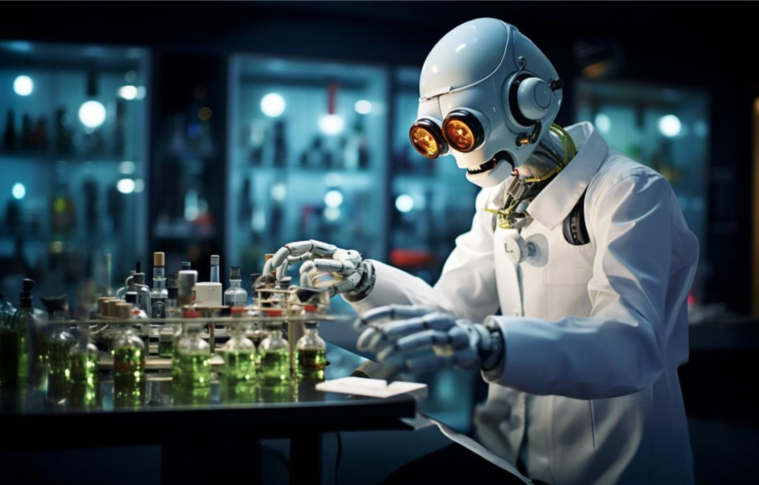Introduction
Nanotechnology, the science of manipulating matter at the nanometer scale (1-100 nanometers), is rapidly emerging as a transformative force in both medicine and manufacturing. Its unique ability to alter the physical, chemical, and biological properties of materials at the molecular level is revolutionizing industries by enhancing precision, efficiency, and performance. This case study explores how nanotechnology is being applied in these two sectors and examines the impact of these innovations.
Nanotechnology in Medicine
Applications in Medicine
Nanotechnology is paving the way for revolutionary medical treatments and diagnostic techniques. Its ability to work at a molecular level allows for more targeted, effective, and less invasive procedures. The following are some key areas where nanotechnology is making significant contributions:
- Targeted Drug Delivery
Traditional drug delivery systems often face challenges such as poor bioavailability and non-specific distribution of drugs throughout the body. Nanoparticles, however, can be designed to target specific tissues or cells, increasing drug efficacy and reducing side effects.- Example:
- Doxil (Liposome-encapsulated Doxorubicin): This FDA-approved nanoparticle-based drug delivery system is used to treat cancer. The drug is encapsulated in lipid-based nanoparticles that target tumor cells more directly, minimizing harm to healthy tissue.
- Example:
- Cancer Treatment and Imaging
Nanotechnology offers innovative approaches for both cancer treatment and diagnostic imaging. Nanoparticles can deliver drugs directly to cancer cells, and nanoparticle-based imaging agents can help detect cancer at an earlier, more treatable stage.- Example:
- Quantum Dots: These semiconductor nanocrystals are used for advanced imaging of cells and tissues. They emit fluorescent light when exposed to UV light, allowing for highly detailed imaging of cancerous tissues in the body.
- Example:
- Regenerative Medicine and Wound Healing
Nanomaterials such as nanofibers and nanoparticles are being used in tissue engineering and wound healing. These materials promote cell growth and regeneration, speeding up recovery and improving the healing of wounds.- Example:
- Silver Nanoparticles: Known for their antimicrobial properties, silver nanoparticles are incorporated into wound dressings to reduce infections and speed up the healing process.
- Example:
- Diagnostics and Biosensors
Nanotechnology also plays a vital role in the development of more sensitive and accurate diagnostic tools. Nanosensors and diagnostic devices can detect disease markers at the molecular level, enabling early detection of conditions like cancer, diabetes, and infectious diseases.- Example:
- Nanoparticle-Based Biosensors: These biosensors are used for point-of-care diagnostics, where they can quickly detect and diagnose diseases by measuring molecular markers in blood or saliva.
- Example:
Nanotechnology in Manufacturing
Applications in Manufacturing
Nanotechnology is also revolutionizing manufacturing by enabling the production of materials with enhanced properties, improving efficiency, and reducing environmental impact. Key applications include:
- Nanomaterials for Advanced Manufacturing
Nanotechnology allows for the creation of materials that are stronger, lighter, and more durable than their traditional counterparts. Nanomaterials are being used in industries such as electronics, automotive, aerospace, and construction.- Example:
- Carbon Nanotubes (CNTs): These cylindrical nanostructures are stronger than steel and lighter than aluminum, making them ideal for applications in aerospace and automotive industries. CNTs are used to create composite materials that improve the performance of aircraft, vehicles, and sporting goods.
- Example:
- Improved Coatings and Surface Treatments
Nanotechnology enables the development of coatings that provide enhanced resistance to wear, corrosion, and UV degradation. Nanocoatings are used in a variety of industries to improve the longevity and durability of products.- Example:
- Self-Cleaning Coatings: Nanomaterials such as titanium dioxide are used in self-cleaning glass and surfaces. These coatings use sunlight to break down organic matter and prevent the buildup of dirt and grime, improving the longevity and maintenance of building materials and electronic devices.
- Example:
- Energy Efficiency and Sustainability
Nanotechnology contributes to sustainable manufacturing practices by improving energy efficiency, reducing waste, and enabling cleaner production methods. Nanomaterials can increase the efficiency of solar panels, batteries, and fuel cells.- Example:
- Nanostructured Solar Cells: Nanotechnology has enabled the development of more efficient solar cells, using nanomaterials like quantum dots and nanowires to capture sunlight more effectively. These advancements have the potential to make solar energy more affordable and accessible.
- Example:
- Nanoelectronics and Miniaturization
The electronics industry benefits significantly from nanotechnology, as it enables the miniaturization of electronic components, allowing for the development of faster, smaller, and more powerful devices.- Example:
- Nanoscale Transistors: The development of nanoscale transistors has driven the advancement of microelectronics, leading to smaller, faster, and more energy-efficient processors used in smartphones, computers, and other devices.
- Example:
Challenges and Considerations
- Safety and Toxicity
The small size and unique properties of nanomaterials may pose potential risks to human health and the environment. The toxicity of nanoparticles is still not fully understood, and research into their safety is crucial for widespread adoption, especially in medical applications. - Regulation and Standardization
The use of nanotechnology in both medicine and manufacturing raises regulatory concerns. Clear standards and guidelines are necessary to ensure the safety and quality of nanomaterials and nanodevices. Regulatory bodies like the FDA and EPA are working to address these issues, but more research is needed. - Cost and Accessibility
While the potential benefits of nanotechnology are vast, the high cost of research, development, and production of nanomaterials can be a barrier to their widespread adoption, particularly in developing countries or industries with limited budgets.
Conclusion
Nanotechnology is a transformative force that is shaping the future of both medicine and manufacturing. In medicine, it holds the promise of targeted drug delivery, improved diagnostics, and regenerative treatments, while in manufacturing, it enables the production of stronger, lighter, and more efficient materials. However, the widespread adoption of nanotechnology faces challenges, including safety concerns, regulatory hurdles, and cost issues. With continued research, innovation, and the development of clear regulatory frameworks, nanotechnology has the potential to revolutionize these industries, driving advances in healthcare and manufacturing that will benefit society as a whole.



